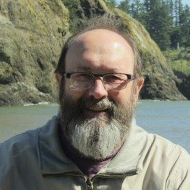I came to my own realization of the importance of teaching evolution by discovering that several unconnected subjects that fascinated me were actually closely connected, and connected with all of modern evolutionary biology.
Discovering for myself that evolution really does unify biology
Evolution unifies a range of phenomena across the biological sciences and thus serves as "the core of modern biology," according to Joe Felsenstein of the University of Washington.
To leave our children ignorant of these connections deprives them of the core of modern biology.
When I was in high school, I read Ralph Buchsbaum's classic book Animals Without Backbones and was astonished at how weird many invertebrates are. Even "worms" turned out to be many wildly different forms of life, not just one group. I was equally surprised that careful work on their anatomy and developmental biology could uncover connections among them and pathways of their evolution from a common ancestor.
But why and how had these species changed? In the 20th century, genetics allowed us to think much more clearly about the kinds of variability that was found in natural populations. In the 1960s, that came to include variation in protein sequences and ultimately in DNA sequences. I had an interest in applying mathematics and computers to biology, and I got involved in working on the mathematical theory of how individual species change. As someone who could program computers, I was also asked to write a program to find clusters of fruit fly species. Reconstructing evolutionary trees by computer analysis of molecular sequences was connected to this, and I became fascinated by it and heavily involved in it.
Ultimately, I was to develop statistical methods for using these evolutionary trees to interpret how morphological characters change through time. Is a character similar in two species because they have evolved similar responses to similar environments? Or simply because they are closely related and the trait developed in their common ancestor? I also have worked on trees of ancestry of individual copies of genes, and how they illuminate changes in frequencies of genes in related species.
We are at a time when molecular biology, organismal biology, and population biology are more and more closely connected. Changes within species, changes across the evolutionary tree, changes of molecular sequences, and changes of visible phenotypes can all be discussed in a unified way. What happened in the evolution of humans, monkeys, kangaroos, lizards, frogs, fish, starfish, insects, mushrooms, ferns, amoebas, and bacteria are all the result of similar processes, and they all share ancestors. To leave our children ignorant of these connections deprives them of the core of modern biology.

